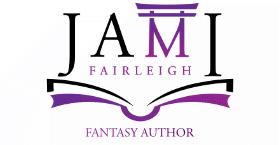
Editing with the Story Grid Methodology: The first four steps

Like many of us, I’ve started and trunked a number of novels. Before I joined the 100 Day program, I’d never actually written “The End” and meant it. So there I was, pleased as punch, with a monster of a manuscript. And then it hit me. What’s next?
I decided to work with an editor and it made sense to me to work with a certified Story Grid editor, having just read the book The Story Grid: What Good Editors Know by Shawn Coyne. But, because the editor I was planning to work with wasn’t available until June, I thought I’d take a stab at making the book a little tighter before giving it to an editor. I’m glad I did the read and polish; I filled some small plot holes and expanded my ending significantly, but the meat of the story really didn’t change much and honestly, I felt like I was slowly spinning my wheels in the mud.
“Writing is Easy; Editing is Hard”
-Greg McFarlane
It was with an equal mix of excitement and dread that I saw the email from Kim Kessler with her editorial feedback. Temporarily, dread won and I didn’t actually open the email for two days. After pulling on my big-girl pants, I finally looked through the deliverables.
The first thing that jumped out at me was not (of course) the document titled Start Here. Instead, I went right to the Next Steps Recommendation Letter. These steps would work for any writer planning to use the Story Grid methodology so I thought I’d share the first four of them with you.
1. Take a Brain Break
I found the feedback a little overwhelming after reading through all of Kim’s notes. Step 1 allowed me to take the space and time to digest the edits that Kim suggested as well as process how I felt about the work that needed to be done to get my book to the next draft.
2. Keep Taking in Story in all its Forms
Kim suggested I read several fiction books that the Story Grid editors call ‘Masterworks’. These books are great examples of how other writers solved story challenges that my book may also face. She also suggested continuing to read and watch films while keeping the five commandments of storytelling in mind.
3. Think About Your Story Globally
When I started writing this book, I had an idea of who the main character was, what he wanted, where the story took place, and what he would go through along the way. And I assumed that was enough. I hadn’t yet begun to read about story structure so I didn’t consciously choose a global genre, the conventions and obligatory scenes for that genre, the point of view, the narrative device, the controlling idea, or really thought about the beginning, middle, and end in a big picture sort of way. Some of those things arose organically through the writing, but the rest are still murky. There are several controlling ideas, the point of view is all over the place, and it’s frankly difficult to tell where the beginning ends and the middle begins, and where the middle ends and the end begins.
4. Plan Your Next Draft by Story Grid Spreadsheeting Your First Draft.
I’ve read the Story Grid book and have been listening to the podcast for a while so I thought this exercise would be a great thing to have Kim, a certified Story Grid editor, do for me. I wanted to see my story gridded and have her point out which scenes did and didn’t work. And she did- for the first five scenes. I don’t know why I assumed she would grid out the whole book. I felt dismayed and intimidated when I realized I would still have to tackle this step.
[bctt tweet=”I’m ready and willing to ‘kill my darlings’ during the editing process. Could someone please point out which of my darlings need to be whacked?” username=”jamifairleigh”]
There are a total of eleven steps in Kim’s letter so I’ll share the next set of them when I finish the first four. Right now, I have an amorphous idea of the global story floating around my little gray cells, but I wanted to make some progress on the editing and move out of the marination stage, so I’ve started to story grid scenes 6-12.
I do think that I need to actually define the global story before I get much further with the story grid. If I don’t, I may need several more drafts to help dig my story out of the mud. How good are you with a shovel?
What is your editing process?

I hate editing. It is so tedious and feels like a slog. There, I said it. But…I do find after a good brain break sometimes when I dig in to edit I can appreciate anew what I’ve already done. So there’s a silver lining?
I suppose I’d agree if of course, your editing improves your work. I’ve seen writers go down a rabbit hole and they end with less then they began (in a not good way).